Mastering the Cursive Alphabet: A Comprehensive Guide for Beginners
Do you want to learn the graceful art of cursive writing? Whether you're a student looking to improve your handwriting, a teacher seeking resources, or simply someone who appreciates the beauty of handwritten script, this guide provides a comprehensive path to mastering the cursive alphabet. At CursiveAlphabet.cc, we offer a range of free resources to help you succeed.
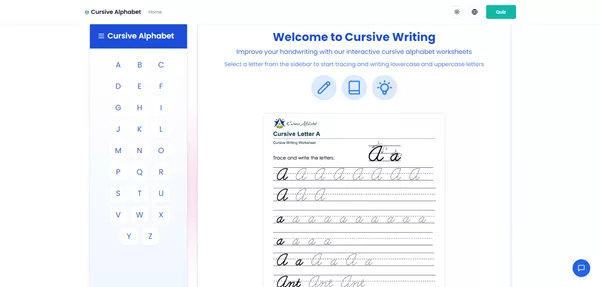
Unlock the Art of Cursive Writing: Step-by-Step Learning Guide
This guide is structured to take you from the basics of understanding what cursive is, through letter formation, connecting letters, and ultimately, developing your unique cursive style. We'll also explore different cursive writing styles and provide you with printable worksheets to practice.
What Is the Cursive Alphabet?
The definition of cursive writing
Cursive writing, also known as script or joined handwriting, is a style of writing where letters are connected in a flowing manner, making the act of writing more efficient and often considered more aesthetically pleasing.
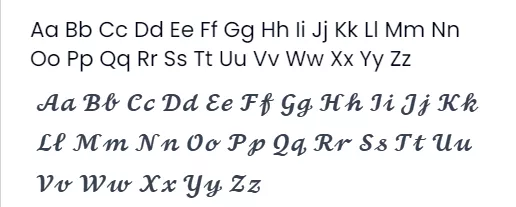
The history of cursive and its evolution over time
Cursive's origins can be traced back to the need for a quicker way to write than painstakingly forming each letter separately. In ancient Rome, various forms of cursive scripts developed for everyday communication and record-keeping. Over centuries, these scripts evolved, leading to the standardized cursive alphabets taught in schools for generations. Cursive was particularly vital before the advent of typewriters and computers, serving as the primary method for handwritten communication. Today, it offers a connection to the past and enhances fine motor skills.
Differences between cursive and print writing
The key difference is that cursive letters are connected, while print letters are separate. Cursive often involves loops, slants, and specific strokes that aren't present in print.
Why cursive is still relevant in the digital age
While much communication is now digital, cursive still holds value. It improves fine motor skills, enhances cognitive development, and allows access to historical documents written in cursive. It also offers a unique form of personal expression.
Benefits of Learning Cursive Writing
Enhancing handwriting speed and fluency
Once mastered, cursive allows for faster writing compared to print due to the continuous flow and reduced pen lifts.
Strengthening fine motor skills and hand-eye coordination
The intricate movements required in cursive engage small muscles in the hand and improve coordination.
Boosting memory retention and cognitive development
The act of forming letters in cursive activates different areas of the brain, potentially improving memory and cognitive function.
The role of cursive in creative expression and signature design
Cursive provides a canvas for personal expression. You can develop your own unique style, especially when designing a signature.
The Cursive Alphabet: A to Z Letter Formation Guide
How to write uppercase cursive letters A-Z
Each uppercase cursive letter has its own unique shape and stroke order. Start by focusing on one letter at a time, practicing its formation until you're comfortable.
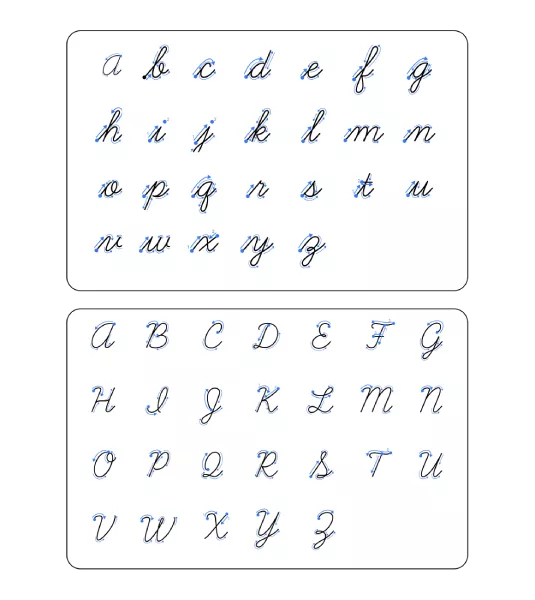
- A: Begins with a sweeping curve and loops back up.
- B: A tall, elegant letter with rounded features.
- C: A simple, open curve. ...and so on, for all 26 letters.
How to write lowercase cursive letters a-z
Lowercase cursive letters tend to be smaller and simpler than their uppercase counterparts. Pay attention to the connecting strokes.
- a: Similar to a small 'o' with a tail.
- b: A tall loop extending above the line.
- c: A simple, small curve. ...and so on, for all 26 letters.
Common mistakes when forming cursive letters
Common mistakes include inconsistent slants, incorrect letter proportions, and uneven spacing. Being aware of these pitfalls will help you avoid them.
Best techniques for practicing cursive strokes
Practice each letter individually, paying attention to the correct stroke order and formation. Use lined paper as a guide and focus on consistency.
How to Connect Cursive Letters Smoothly
Understanding cursive ligatures: why connections matter
Ligatures are the connecting strokes between letters. Smooth, well-formed ligatures are essential for readable and flowing cursive.
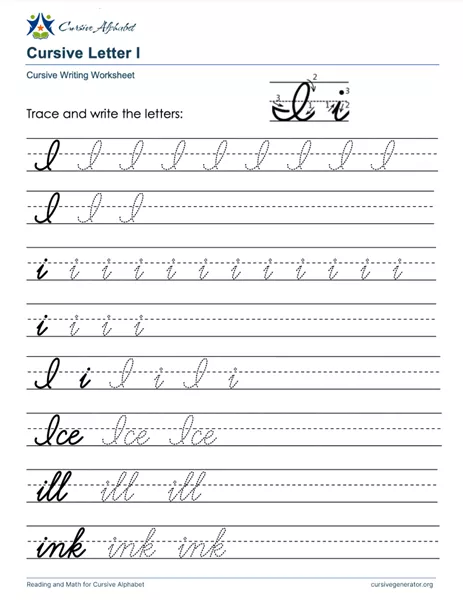
Which cursive letters do not join?
Certain letters, such as 'b', 'o', 'v', and 'w', often don't connect directly to the following letter.
Tips for maintaining consistency and rhythm in writing
Maintain a consistent slant and spacing. Practice writing words and sentences to develop a rhythm.
Exercises for improving letter transitions
Focus on connecting common letter pairs like "th," "er," and "in." Practice writing common words and phrases in cursive.
Printable Cursive Alphabet Worksheets for Practice
Free downloadable cursive writing worksheets (PDF)
Visit CursiveAlphabet.cc to download free cursive alphabet printable worksheets in PDF format. These worksheets provide guided practice for letter formation and connections.
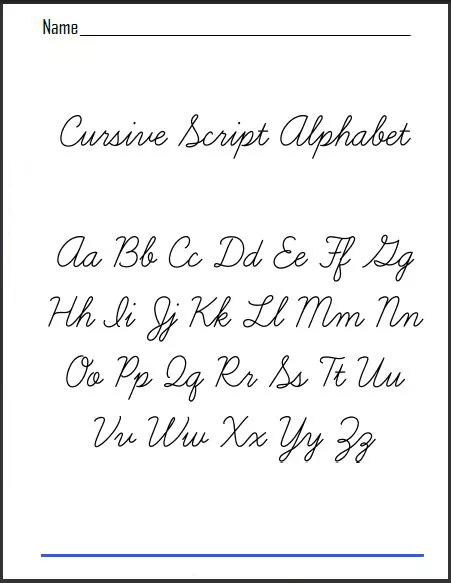
How to use practice sheets effectively
Start with tracing the letters, then practice writing them independently. Focus on accuracy over speed initially.
Recommended exercises to improve cursive writing skills
- Letter Drills: Practice individual letters repeatedly.
- Word Drills: Write common words in cursive.
- Sentence Drills: Practice full sentences to improve flow.
- Copywork: Copy passages to improve your style.
Daily cursive writing challenges for learners
Set daily goals, such as practicing a specific letter or writing a sentence in cursive. Consistency is key to improvement.
Tips to Improve Cursive Handwriting
Choosing the right pen and paper for cursive writing
Use a pen that flows smoothly and doesn't require excessive pressure. Paper with a slightly textured surface can provide better grip.
Maintaining proper hand positioning and grip
Hold the pen comfortably, allowing your hand and wrist to move freely. Avoid gripping the pen too tightly.
Writing exercises to improve consistency and flow
Practice writing common words and phrases repeatedly to develop muscle memory and improve flow. Focus on maintaining a consistent slant and spacing.
How to develop your unique cursive handwriting style
Experiment with different letter formations, slants, and flourishes to develop a style that reflects your personality.
Cursive Writing Styles Around the World
Introduction to different cursive handwriting styles
- Spencerian script: Known for its elegant, flowing strokes.
- Palmer method: A simplified and more efficient style developed for business writing.
- Modern cursive handwriting: A more relaxed and personalized style.
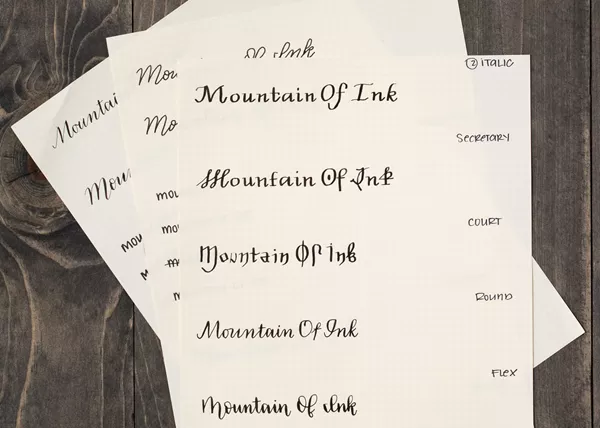
Cursive variations in different languages.
While English cursive is widely recognized, many languages have their own unique cursive forms adapted to their respective alphabets and writing conventions. Exploring these variations can offer a fascinating perspective on the evolution of handwriting across cultures.
Differences between cursive writing in English and other languages
Cursive styles vary significantly across languages, reflecting cultural and historical influences.
Start Your Cursive Writing Journey Today
Mastering cursive is an achievable goal with dedication and the right resources. Start today by exploring the resources available at CursiveAlphabet.cc and begin your journey toward beautiful and fluent cursive handwriting. Download your free printable cursive alphabet PDF and start practicing!
FAQ
What is the best way to learn cursive alphabet writing?
Start by learning individual letters, then move on to connecting them smoothly. Use our free printable cursive alphabet pdf worksheets for structured practice. Consistent effort is key!
How can I write faster in cursive?
Maintain consistent hand movement and reduce unnecessary pen lifts. Download our practice sheets and focus on fluid motions to improve speed.
What is the easiest cursive writing style to learn?
The Palmer Method is often recommended for beginners due to its simplified letter forms and emphasis on efficiency. Our practice materials align well with this method.
Are there any cursive writing apps for practice?
While some apps offer digital cursive practice, we encourage you to print out our free worksheets and practice with a pen and paper. This hands-on approach provides a more effective way to develop muscle memory and improve your handwriting skills. Download your free cursive alphabet worksheets today!
Is cursive writing still taught in schools?
Some schools include cursive in their curriculum, while others focus primarily on digital literacy. The inclusion of cursive varies by location and educational priorities.